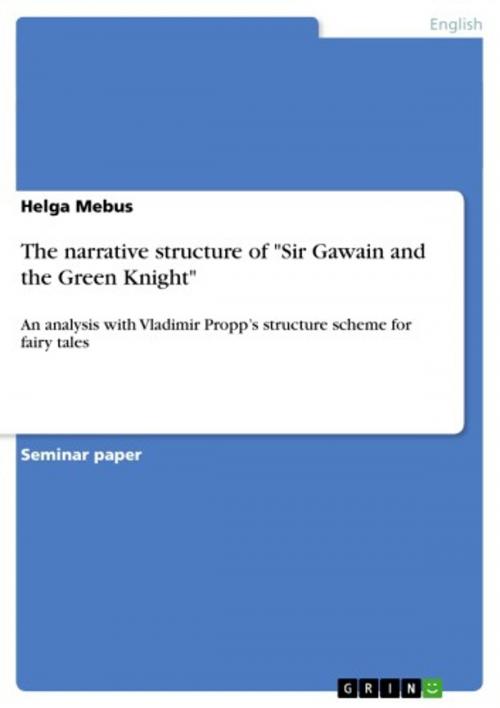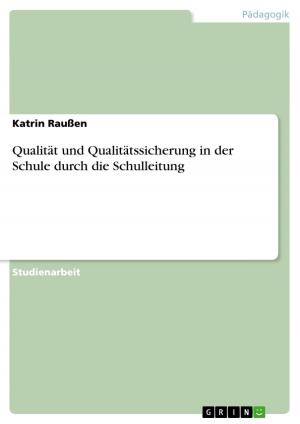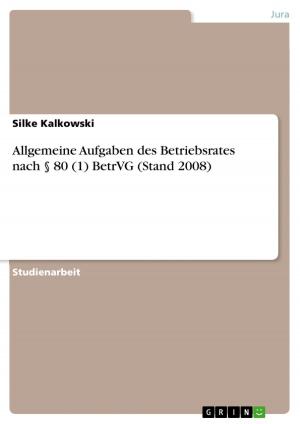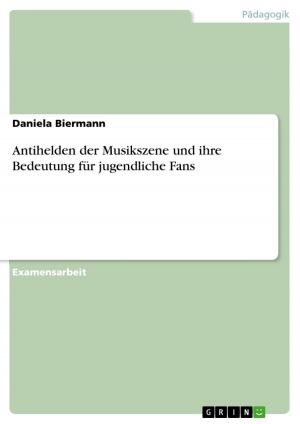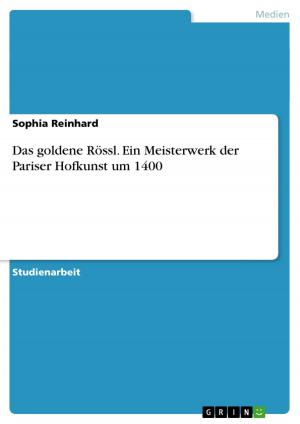The narrative structure of 'Sir Gawain and the Green Knight'
An analysis with Vladimir Propp's structure scheme for fairy tales
Fiction & Literature, Literary Theory & Criticism, British| Author: | Helga Mebus | ISBN: | 9783638065597 |
| Publisher: | GRIN Verlag | Publication: | June 19, 2008 |
| Imprint: | GRIN Verlag | Language: | English |
| Author: | Helga Mebus |
| ISBN: | 9783638065597 |
| Publisher: | GRIN Verlag |
| Publication: | June 19, 2008 |
| Imprint: | GRIN Verlag |
| Language: | English |
Seminar paper from the year 2006 in the subject English Language and Literature Studies - Literature, grade: 1,3, University of Cologne, 12 entries in the bibliography, language: English, abstract: Sir Gawain and the Green Knight is a poem by an unknown poet. That is an interesting case. The question might arise that the poem is only as popular as it is because of having an unknown writer. That is obviously not the reason. Sir Gawain and the Green Knight is a brilliant narrative put into a complex structure. Its structure gives and gave reason to look at for many researchers. This paper provides a further viewpoint on Sir Gawain and the Green Knight's structure. Considering the textual structure, it is a question of either having a 'striking balance of [...] structure' (Randall 1957: 161) or an 'extraordinary coincidence' (Hieatt 1968: 346) when talking of the five times five pentangle-one of the two important symbols in the poem-in line 2525. Four divisions with irregular length, no regular length of stanzas, no clear rhythm, but a bob and wheel at the end of each stanza make the structural analysis very complicated. That is probably the reason why studies of the textual structure of the poem are contradictory. Michael Robertson, for example, departs the 101 stanzas of the poem into nine sections in the following way: 22-1-11-11-11-11-11-1-22 (compare 1982: 780). Unlike A. Kent Hieatt, who divides them into sections of 21-6-6-6-6-11-11-11-1-21-1 (compare 1968: 356-367). While studying the narrative structure of Sir Gawain and the Green Knight, in contrast, I was reminded of a research paper I wrote two years ago on the structure of fairy tales with the use of a method by a Russian formalist named Vladimir Propp. The narrative structure of Sir Gawain and the Green Knight seems to be very similar to that of a fairy tale such as Propp defines it, and Clinton Machann has already done a brief analysis of the poem's actions in Propp's way (compare 1982: 629-637). If the poem fits into Propp's scheme this will prove that its narrative structure is similar to the one of the Russian fairy tales used by Propp and would be helpful in comparing its structure to other narratives. A deeper analysis of the structure of Sir Gawain and the Green Knight considering Propp's scheme is the result. In the following, a brief description of Propp's method is given (which is similar to that of my research paper for the Englisches Seminar der Universität zu Köln in 2004). Afterwards, the results of studying Sir Gawain and the Green Knight according to Propp's method are explained and presented.
Seminar paper from the year 2006 in the subject English Language and Literature Studies - Literature, grade: 1,3, University of Cologne, 12 entries in the bibliography, language: English, abstract: Sir Gawain and the Green Knight is a poem by an unknown poet. That is an interesting case. The question might arise that the poem is only as popular as it is because of having an unknown writer. That is obviously not the reason. Sir Gawain and the Green Knight is a brilliant narrative put into a complex structure. Its structure gives and gave reason to look at for many researchers. This paper provides a further viewpoint on Sir Gawain and the Green Knight's structure. Considering the textual structure, it is a question of either having a 'striking balance of [...] structure' (Randall 1957: 161) or an 'extraordinary coincidence' (Hieatt 1968: 346) when talking of the five times five pentangle-one of the two important symbols in the poem-in line 2525. Four divisions with irregular length, no regular length of stanzas, no clear rhythm, but a bob and wheel at the end of each stanza make the structural analysis very complicated. That is probably the reason why studies of the textual structure of the poem are contradictory. Michael Robertson, for example, departs the 101 stanzas of the poem into nine sections in the following way: 22-1-11-11-11-11-11-1-22 (compare 1982: 780). Unlike A. Kent Hieatt, who divides them into sections of 21-6-6-6-6-11-11-11-1-21-1 (compare 1968: 356-367). While studying the narrative structure of Sir Gawain and the Green Knight, in contrast, I was reminded of a research paper I wrote two years ago on the structure of fairy tales with the use of a method by a Russian formalist named Vladimir Propp. The narrative structure of Sir Gawain and the Green Knight seems to be very similar to that of a fairy tale such as Propp defines it, and Clinton Machann has already done a brief analysis of the poem's actions in Propp's way (compare 1982: 629-637). If the poem fits into Propp's scheme this will prove that its narrative structure is similar to the one of the Russian fairy tales used by Propp and would be helpful in comparing its structure to other narratives. A deeper analysis of the structure of Sir Gawain and the Green Knight considering Propp's scheme is the result. In the following, a brief description of Propp's method is given (which is similar to that of my research paper for the Englisches Seminar der Universität zu Köln in 2004). Afterwards, the results of studying Sir Gawain and the Green Knight according to Propp's method are explained and presented.
